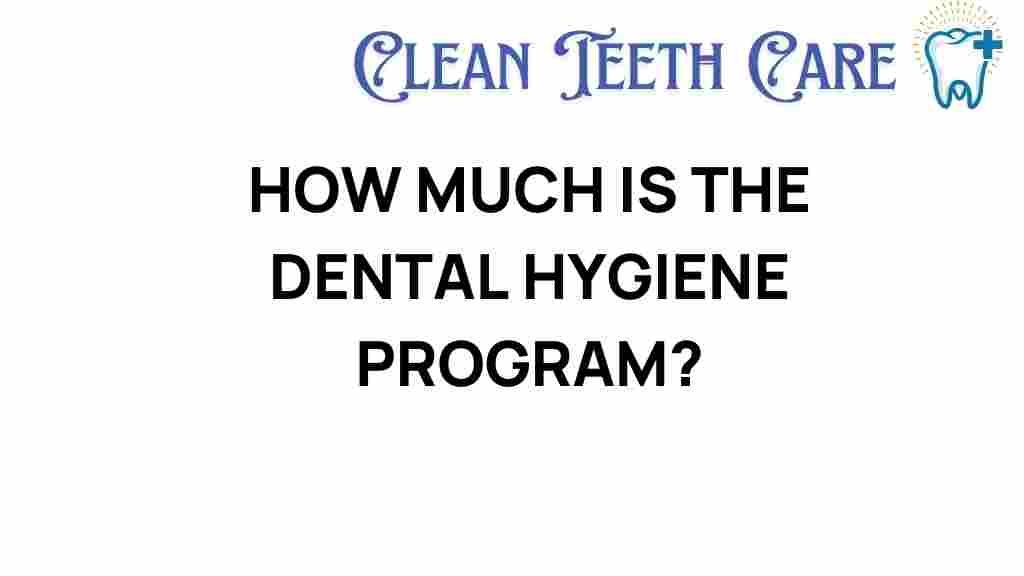Unveiling the True Cost of Dental Hygiene Programs
The field of dental hygiene plays a crucial role in maintaining oral health and preventing diseases. As more individuals become aware of the importance of oral care, the demand for qualified dental hygienists continues to grow. However, aspiring dental hygienists often face a significant question: what is the true cost of dental hygiene programs? In this article, we will explore the various factors that contribute to the cost of dental hygiene programs, including education, affordability, and career prospects.
Understanding the Cost of Dental Hygiene Education
When considering a career in dental hygiene, understanding the overall financial commitment is essential. The cost of dental hygiene programs can vary widely based on several factors:
- Type of Institution: Costs can differ between community colleges, universities, and private institutions.
- Location: Programs in urban areas may be more expensive than those in rural locations.
- Program Length: Associate degree programs typically take two years, while bachelor’s programs can take four years, affecting total tuition costs.
- Additional Fees: Students should consider lab fees, textbooks, and equipment costs in addition to tuition.
Breaking Down the Costs
To provide a clearer understanding, let’s break down the costs associated with dental hygiene programs:
- Tuition Fees: On average, tuition can range from $5,000 to $30,000 per year, depending on the institution.
- Books and Supplies: Expect to spend between $1,000 and $2,500 for books, uniforms, and dental hygiene instruments.
- Lab Fees: Many programs charge lab fees ranging from $500 to $1,500 per semester.
- Licensure Fees: After completing the program, students must pay for licensure exams, which can cost anywhere from $300 to $600.
Financial Aid and Affordability
Despite the potentially high cost of dental hygiene education, there are various financial aid options available to help students afford their training:
- Scholarships: Many organizations offer scholarships specifically for dental hygiene students.
- Grants: Federal and state grants can significantly reduce the cost of education.
- Student Loans: Federal and private loans can help students cover the cost of tuition and living expenses.
- Work-Study Programs: Some programs offer work-study opportunities to help students earn money while studying.
For more information on financial aid options, you can visit the Federal Student Aid website.
Career Opportunities and Earning Potential
Investing in a dental hygiene program can lead to lucrative career opportunities. According to the U.S. Bureau of Labor Statistics, the median annual salary for dental hygienists is around $77,000, with the potential for higher earnings based on experience and specialization.
Career paths for dental hygienists include:
- Clinical Hygienist: Providing direct patient care in dental offices.
- Public Health Hygienist: Working in community health settings to promote oral health.
- Research and Education: Engaging in research or teaching future dental hygiene students.
- Sales and Marketing: Working in dental product sales or marketing.
The demand for dental hygienists is projected to grow by 6% from 2021 to 2031, emphasizing the stability and opportunities within this field.
Step-by-Step Process to Enroll in a Dental Hygiene Program
If you’re considering enrolling in a dental hygiene program, here’s a step-by-step guide to help you navigate the process:
- Research Programs: Look for accredited dental hygiene programs in your area or online. Consider factors such as cost, duration, and reputation.
- Check Admission Requirements: Ensure you meet the prerequisites for the programs you are interested in.
- Apply for Financial Aid: Complete the FAFSA and explore scholarship opportunities.
- Submit Applications: Prepare and submit applications to your chosen programs.
- Prepare for Interviews: Some programs may require interviews as part of the application process.
- Enroll: Once accepted, complete your enrollment and pay any necessary deposits.
- Begin Your Education: Start your classes and clinical training.
- Prepare for Licensure: After graduation, study for and take the licensure exams required to practice.
Troubleshooting Common Concerns
As you navigate the journey of enrolling in a dental hygiene program, you may encounter some common concerns:
- High Costs: If tuition is a concern, consider community colleges or financial aid options.
- Time Commitment: If balancing work and school is challenging, look for part-time programs or flexible schedules.
- Academic Struggles: Utilize tutoring services and study groups offered by your institution.
- Job Market Anxiety: Research the job market in your area and consider networking with professionals in the field.
Conclusion
Understanding the cost of dental hygiene programs is essential for anyone considering a career in this rewarding field. While the initial investment may seem daunting, the potential for a stable and lucrative career makes it worthwhile. By exploring financial aid options and understanding the various career paths available, you can make informed decisions about your education and future. Remember, investing in your education is investing in your health and the health of your community.
For additional resources and support, consider visiting the American Dental Hygienists’ Association for guidance on your journey.
This article is in the category Prevention and created by CleanTeethCare Team
